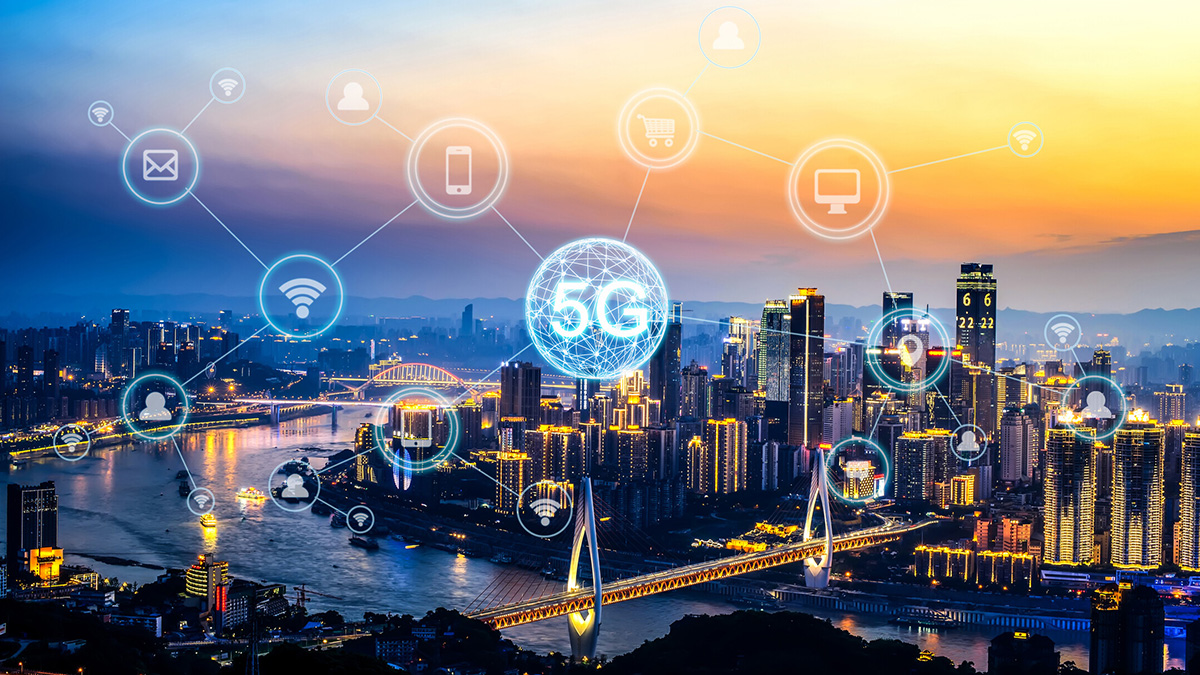To meet the innovative application needs of the next generation, while ensuring the best user experience and energy efficiency, MediaTek pointed out today that 6G will enable ubiquitous global network connectivity, and 6G data transmission rates will increase to 10 to 100 times that of 5G's, giving ultra-low latency that will match the requirements of advanced applications.
To meet the innovative application needs of the next generation, while ensuring the best user experience and energy efficiency, MediaTek pointed out today that 6G will enable ubiquitous global network connectivity, and 6G data transmission rates will increase to 10 to 100 times that of 5G's, giving ultra-low latency that will match the requirements of advanced applications.
Key technologies driving the development of 6G:
Three key technologies are required to drive 6G development: Artificial intelligence (AI), advanced radio frequency and optical technologies, and networking technologies.
-
Artificial intelligence:
AI has become one of the most popular research fields in many engineering disciplines. The biggest feature of 5G is the ability to greatly improve flexibility. 6G will use AI technology to further develop such flexibility. In the past, wireless research activities have led to the application of AI techniques in many fields, such as designing hand-off algorithms using neural networks and fuzzy logic.
Although algorithms based on AI technology are rarely applied to wireless networks, for learning technologies (such as deep learning) or for new computing architectures, they can make such complex algorithms more practical. Great progress in algorithms has become the main force driving this trend. In the radio access network, core network, and applications, AI/cognitive technologies are widely used at each layer, and work best in combination applications. This adaptability helps improve network resilience and helps reduce operating and maintenance costs.
Optimizing components through tuning adjusting in response to environmental interference or circuit aging/misalignment effects is a benefit of RF. By flexibly adjusting modems and protocols, spectrum management and demodulation can be enhanced, especially in the presence of heterogeneous interference. With the advent of spectrum sharing technology, federated learning technology can use each mobile device as a sensor, which facilitates a comprehensive but in-depth exploration of interference and coverage issues in large areas. Using AI to find suitable information routing mechanisms, including the use of satellite or terrestrial wireless relay technology, can develop more complete front haul and backhaul network support mechanisms.
There are studies on how to use AI in the core network for system optimization, coordination, and maintenance. Adversarial learning is when AI cyber attackers and AI cyber defenders compete to find vulnerabilities and solutions. The use of adversarial learning can continue to improve overall AI-RAN (Artificial Intelligence and Radio Access Networks) security. At the application level, AI can predict background context and application information needs, as well as preset network parameters based on estimated information flow.
-
RF and Optical Technology:
A key driver of 5G technology has been the low-cost production of mmWave devices in recent years and the abundance of spectrum available in mmWave bands. This trend is expected to continue, with higher frequency and more energy-efficient installations emerging. Ultimately, this technology trend may improve the economic viability of terahertz (THz) communications. A single wafer can accommodate an entire phased array. If wireless power transfer is used, such phased array chips can communicate without external power pins. Another driving factor is the flexibility of RF components. These technologies are based on Field Programmable Gate Arrays (FPGAs) to create very small radio systems. 40 GHz in various frequency bands.
-
Internet technology:
6G network technology will follow SDN (Software-defined networking), NFV (Network functions virtualization), and network slicing technology. However, 6G may take these concepts to the extreme, customizing network slicing according to individual needs and applications, thereby providing users with a truly customized quality experience. Such systems using personalized network slicing are bound to use edge computing technology on a large scale and will form a fairly complex network responsibility distribution model between the core network and edge computing nodes.
Feasible 6G performance goals:
6G uses a variety of metrics, including general specifications for data transfer rates, latency, and availability. 6G will continue the trend that started with 5G, and through Quality of Experience (QoE), data transfer rates will increase, perhaps reaching the level of 1 TB per second. The time delay may be reduced to tens of milliseconds. In addition, age-of-information can be used to indicate the order of information by date, so that information can be processed in order of priority.
In the 5G era, reducing power consumption has been set as a goal, hoping to make the battery life of IoT devices up to 10 years, and perhaps further reduce power consumption in the future to facilitate energy harvesting, including backscatter communication. 6G may also include metrics and standards for energy harvesting and wireless power transfer requirements. 6G standards may also include security resilience metrics, especially given that quantum computing has the potential to break most encryption standards after 6G is implemented.
6G system design principles:
Simplexity, Optimization, and Convergence (S.O.C.) are the possible development directions of the 6G standard, which will accelerate the digital transformation and sustainable development of society.
- Simplexity:
To take into account high-performance requirements and excellent user experience, the 6G standard should simplify the design of traditional communication networks, and only retain the necessary complexity in exchange for higher system performance (such as support for different types of devices, wider spectrum range, spectrum properties adaptation), multi-network integration, etc.), strike a balance between complexity and simplicity, and on this basis respond to the global trend of energy conservation and carbon reduction, and optimize unit energy consumption.
- Optimization:
6G system optimization must be user experience-oriented so that both network providers and consumers are satisfied. System designers will optimize from three new key directions, namely wireless network heterogeneous architecture integration (providing networking resources with maximum efficiency), communication network intelligence (systematic optimization of communication networks with AI), and support for individual application scenarios the cross-layer design (directly provide the basic functions required by users, in place at one time).
- Convergence:
The fusion concept includes full-band access support, a fusion between devices/equipment and network nodes, the fusion of multiple wireless access technologies, a fusion of terrestrial and non-terrestrial networks, and comprehensive fusion of communication, perception, and computing, maximizing technology economies of scale to overcome challenges such as coverage and energy efficiency.
6G future five trends:
- The market's demand for communication system performance will further increase to support applications with higher requirements, such as holographic communication, tactile communication, digital twin, avatar, telepresence, and other technologies.
- Data transmission rates will increase to 10 to 100 times that of 5G, with ultra-low latency to meet the needs of advanced applications.
- Use the 7-24GHz and Sub-THz frequency bands to increase the Total Addressable Bandwidth to more than 50GHz. The addition of these two new frequency bands will be a strong foundation, paving the way for new extreme applications.
- Network densification is imperative to increase capacity in low-frequency bands and overcome the problem of propagation attenuation in new frequency bands. Due to fundamentally different physical properties, indoor base station deployment costs and other feasibility issues and challenges require a different approach than 5G.
- Achieve ubiquitous global network connectivity, including remote areas that are not currently covered by cellular networks technology.
Outlook for 6G technology:
5G Phase 1, or R15, provides a fairly solid foundation for enhancing subsequent releases by defining a high-performance new air interface (NR) and a resilient network architecture. R16 and subsequent releases focus on new verticals, hoping to greatly expand the application of wireless communication. R16 and subsequent versions will expand the supported services beyond the eMBB (Enhanced Mobile Broadband)-based R15. 5G LANs can replace or augment fixed or wireless LANs, as well as provide flexibility and enhanced performance.
In non-terrestrial networks, satellites use 5G to make services universal, continuous, and scalable. Important medical applications can deliver healthcare improvements and cost savings thanks to the performance provided by 5G. The development of 5G technology enables novel V2X (Internet of Vehicles) applications such as platooning, advanced driving, and remote driving. UAVs powered by 5G technology can support a wide variety of scenarios, including delivering medical supplies in the event of a disaster.
5G technology can assist audiovisual production services in and out of the studio. Network entity control applications can use 5G technology to implement Industry 4.0 on a large scale. NR-based positioning technology supports numerous use cases, including emergencies, UAV operations, AR/VR/XR, and factory automation. Haptic communication uses tactile sensing technology to elevate the user experience to a whole new level.
6G will take the user experience to a whole new level and revolutionize many industries. 6G may feature data transfer rates around 1 terabyte per second, latency in the order of milliseconds, and device and network energy efficiency. High-fidelity holographic projection communication and multi-sensory communication may become part of our daily life. Industries such as healthcare, manufacturing, entertainment, and transportation are being impacted by 5G, and in the 6G era, industries will experience a larger-scale transformation.



.jpg)










.jpg)